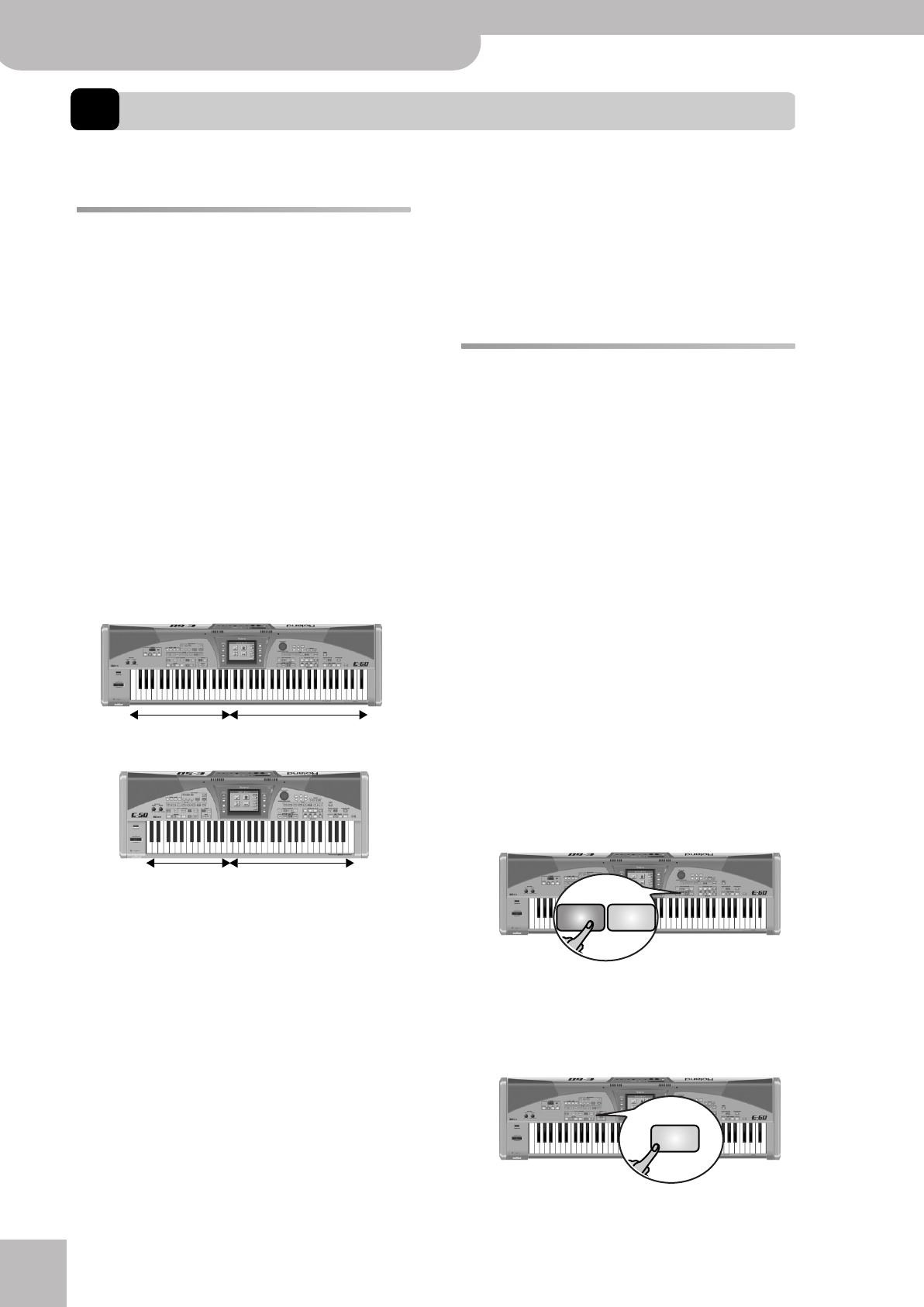
Quick Start
22
r
E-60/E-50 Music Workstation
3. Quick Start
In this chapter, we will scratch the surface and walk you through the major functions.
The general idea
Your E-60/E-50 is several instruments in one. There
are three main sections you can use for playing live.
A
Keyboard parts:
This section consists of parts you need to play via the
keyboard, hence the name “Keyboard”. The E-60/E-50
provides five Keyboard parts, four of which can be
used simultaneously: UP1, UP2, LWR and MBS. “UP”
stands for “Upper” and refers to the right half (if
there is a split). “LWR” refers to “Lower” and thus to
the left half. “MBS” is short for “Manual Bass”, i.e. a
monophonic bass part whose notes depend on the
chords you play.
There is no Manual Drum part, because any of the
parts just mentioned can be used to play a Drum Set.
The fifth part, “MELODY INT”, is what computer buffs
would call a “cross-platform part”: it belongs to the
Keyboard section but it is in part controlled by the
Arranger. See “Melody Intelligence” on page 62.
B
Arranger/Style section:
The Arranger is your backing band. It plays an accom-
paniment (called Music Style). In a way, the Arranger
works like a drum machine because it uses accompa-
niment patterns.
Unlike a drum machine, however, you can easily
select the desired pattern while playing. So you do
not need to program the order in which you intend
to use the patterns. Furthermore, the Arranger not
only provides a rhythm section but also chords, gui-
tar and synthesizer riffs and so on. The accompani-
ment can be transposed in realtime. All you have to
do is play a different chord (usually with your left
hand).
C
Recorder section:
That’s how it’s called on the front panel, so we’ll stick
to it. This section actually encompasses a 16-track
sequencer, a straightforward MIDI recording function
and a very sophisticated Standard MIDI File player
with a host of all realtime control functions.
Playing to an automatic accompa-
niment
Let us begin with the automatic accompaniment func-
tion, which is called “Arranger” and often referred to as
“Style” in the display and on the front panel.
The Arranger is an interactive “playback sequencer” that
provides the accompaniments. These accompaniments
are called “Music Styles”, because the musical phrases
(“patterns”) they play concentrate on a given musical
genre (Rock, Pop, Dance, Waltz, etc.).
The Arranger allows you to transpose the melodic
accompaniment parts (bass, piano, guitar, etc.) simply
by playing chords. In most instances, you will probably
do so with your left hand. Each Music Style comprises
several patterns, so that you can vary the accompani-
ment by starting with an introduction, using a simple
accompaniment for the verses, a more elaborate one
for the choruses and by ending your songs with an
“Ending” pattern.
Let us first look at the most important aspects for oper-
ating the Arranger:
(1) Connect and switch on the E-60/E-50 (see pages
18 and 19).
(2) Press the EASY SETTING [ARR] button.
The button lights and the keyboard is split into two
halves. The left half can be used to play chords, while
you can play melodies in the right half.
(3) If the [SYNC] button lights (which is probably the
case), press it to switch it off.
Left hand:
Arranger control
Right hand: melody
(Keyboard parts)
Left hand:
Arranger control
Right hand: melody
(Keyboard parts)
ARR ORGAN
SYNC
E-60_50_OM_UK.book Page 22 Thursday, June 22, 2006 10:06 AM
